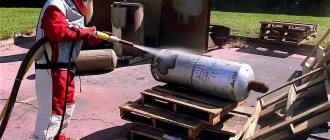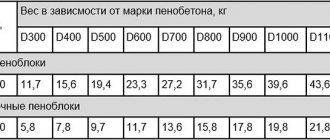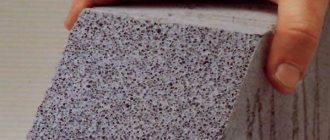The drill is used with rotary hammers and less often with impact drills. This tool is needed to create a hole in very hard materials. Stone, concrete or brick are not as easy to cut as wood or even metal.
Therefore, drilling such material is not advisable. A hammer drill with a drill does not cut, but breaks the material with its strong tip by striking it. By rotating, debris and dust that are formed during the drilling process are removed from the hole.
Hammer drills have many characteristics that will determine their intended purpose:
- tool shape;
- material that is processed by the tool;
- length and diameter of the drill;
- strength;
- type of shank.
Fixation in the chuck
The most basic thing you need to understand when buying a drill is the types of shanks. After all, inexperienced craftsmen have situations when, after purchasing a drill, it turns out that it does not even fit the tool. You have to go back to the store and exchange for another one.
For a better understanding, let’s look at each type of SDS system[1]:
SDS-plus - most household hammer drills are equipped with this chuck. This type is intended for shanks of the same name, the diameter of which does not exceed 18 mm. The tool is securely fixed thanks to 4 grooves, two of which are responsible for locking the drill in the chuck, and the other two set the exact direction of movement during impact impulses.
SDS-top has almost no differences from the pluses, but it performs better when drilling holes larger than 16 mm. The drill is fixed in a similar way, but lies deeper into the tool, which increases the contact area. This cartridge almost always comes with a smaller plus version.
SDS-max is designed for more serious tasks. However, such a cartridge is found only in professional series of hammer drills and is rarely used in everyday life. A drill for such a tool can exceed 18 mm in shank diameter. The structure of such a shank is similar to SDS+, but has additional grooves for energy transmission.
SDS-quick is only used in some Bosch rotary hammers. This chuck is considered universal and is capable of fixing hex bits and drills, in addition to drills. However, it is intended for small diameters and is used only in everyday life.
There is also a cam adapter for the hammer drill . It allows you to use a hammer drill, which has a drilling mode without impact, with cylindrical drills and even bits for screws. This chuck is useful when you don’t have a drill at hand, but there is an urgent need to drill a hole in wood, metal, etc.
[1] S pecial D irect S ystem - “special guide system.” Invented and created by Bosch to make it easier to remove tools from the chuck.
Manufacturers
Among the manufacturers, the most famous brands are:
Bosch
Fastening system: SDS plus (SDS max and quick). Advantages: increased inclination of longitudinal grooves, high performance, reliability, minimal friction. What to use it for: for working with deep holes in concrete.
Makita
Advantages: reduced inclination of longitudinal grooves, long-term operation, four special edges for better penetration into concrete, cone-shaped center for precision work with Makita drills. Suitable for: shallow holes in concrete.
Diager Twister
Fastening system: SDS plus. Advantages: strong soldering, increased power, and precision thanks to a special insert. Suitable for: granite, concrete and brick.
It is not water that wears away stones
The main working part of any drill is the tip. It must be made of durable material that can withstand work under conditions of enormous loads and overheating, because its main task is to literally break the strong structure of the stone.
The vast majority of drills are tipped with an alloy of carbon-rich tungsten and cobalt. This alloy is popularly called Pobedit alloy. It has very high strength values and is capable of making holes in such durable rocks as granite and marble.
By the way, the same material is used to make tank armor-piercing shells.
Stronger and more durable cutting tool edges are made from synthetic diamond. This super-hard material guarantees trouble-free drilling into granite and reinforced concrete of the highest strength. However, the cost of such instruments will be higher than their Pobedit analogues.
There are different types of drills
According to their intended purpose, drills can be divided into the following categories:
Screw
They are used when it is necessary to create a deep hole of large diameter. Drilling of this kind creates a large amount of dust and waste, which is why constant removal of cuttings is necessary. The screw design allows for the most efficient removal of a large volume of dust without loading the hammer.
Gentle
The most common type of drill. They are used everywhere for drilling small-diameter holes. Such tools can last longer than the hammer drill itself if used properly. They are ineffective at removing dust, so sometimes they can get stuck.
Crowns
With this tool you can make very wide holes in the wall. Widely used to create a niche for an outlet or switch. A distinctive feature is the incomplete destruction of the removed material. Only a hole is cut in the center and a narrow circle along the edge, leaving the core.
Breakthrough
An impressive-looking drill, which is used to make holes of particularly large diameter. It is used when it is necessary to lay communications: pipes, thick cables, hoses.
Tool dimensions
The quality of work will be ensured only by the correct selection of drills for durable structures. There are several nuances:
- diameters of the base of concrete drills for a rotary hammer;
- diametrical section of the working section;
- length of the drilling element.
They produce devices in sizes specified in regulatory documents.
When purchasing, you must follow these recommendations from experts:
- in domestic conditions, when carrying out repairs or private construction, the most popular are concrete drills for hammer drills 6 mm, 8 mm and 10 mm ;
- To provide recesses for heavy and massive objects, choose tools with a diametrical cross-section of 10 or 20 millimeters.
The best of the best
If we consider specific manufacturers, it is worth noting Bosch. This company produces the best tools chambered for SDS-max, of which it is the inventor. Among others, German DeWALT drills perform excellently, which are excellent for household and professional use.
If we consider drills for more specialized purposes, then Makita comes to mind. The flat drills from this company cannot be called the best, but the breaking ones show excellent performance even in harsh working conditions.
Among public sector employees, it is worth highlighting Elitech. The company makes excellent drills for home use. However, you should not rely on them when processing dense rocks.
Do not forget to lubricate the shank after purchasing the tool. It is advisable to use lubricant of the same brand as the drill. However, this is not critical.
Usage
The thicker and longer the drilling element, the more powerful the hammer drill is needed to operate it.
Manufacturers, as a rule, enter the maximum permissible dimensions of drilling attachments into the passport data of their products; for example, for a 500 W unit, an 18 mm attachment will be the limit of possibilities.
An engine that is not powerful enough will simply not be able to provide adequate performance and will quickly fail.
The supplier also indicates in what speed mode the device can be used. You should not overload a rotary hammer for continuous operation; you need to stop it approximately every 10-15 seconds so that the device does not overheat, especially for inexpensive equipment.
When installing, it is necessary to lubricate the drill bit shank with special oil, which will reduce wear. The drilling axis must be maintained, otherwise the drill may simply break.
If you plan to punch holes in reinforced concrete, you can choose a drill with diamond coating and a design adapted for this purpose.
Some manufacturers have made it possible to “transplant” the chuck from a large hammer drill to a medium one in order to make the tools more versatile, but we remind you that they should not be subjected to excessive load.
What, with what and how to drill
To drill concrete for a thin cable or dowel in ordinary apartment buildings, in 99 out of 100 cases you will need a Pobedit flat drill with an SDS-plus cartridge. In everyday life, you may not need another tool for a hammer drill. Maybe a crown.
If you have to work with natural stones, or use the drill very often, then it is better to choose an SDS-max diamond drill, if this is provided by the hammer drill.
For those who will use a hammer drill for laying communications, you will have to acquire a powerful device with a max cartridge and a breach drill.
The wide variety of purposes to which the hammer drill is applied is too great to describe every case.
The most important thing is to consider the length, shank and diameter of the drill, as well as the material that will be processed.
Now you know that in order to make a hole in the wall, you don’t need to run to the store for a concrete drill. Most likely, the seller will even correct you if you make such a request and will offer you a drill.
How can you get a drill stuck in the wall?
You need to turn on the impact mode without rotation and pull out the tool little by little. Some rotary hammers have reverse, but in this mode the brushes can be damaged. A radical method, if all else fails, is to cut off the stuck drill with a grinder and bury it in the wall.
Are diamond tips really made from diamond?
Yes, however, this is not the kind of diamond that is used in jewelry. This diamond is obtained artificially; it is dirtier in terms of composition, but is not much inferior in strength to the real thing.
How to understand which cartridge is in the hammer drill?
The cartridge itself should have an engraving with the designation. The drills also have marks indicating which shank the tool has.
Can't you drill into concrete with a drill?
However, the drill may not be able to cope with reinforced concrete walls and natural stones. If you don’t want to break a drill or drill, then use a hammer drill.
My drill tip melted while drilling. How is this possible?
This phenomenon is not uncommon. Low-quality drills can actually reach the melting point if a thick steel rod comes across it along the way and the master continues to drill. However, better quality drills can also handle reinforcement in the wall.
By diameter
This parameter is very important, since most often dowels are inserted into the holes made, and its dimensions must fully correspond to the punched hole, otherwise such fastening will be unreliable.
The minimum diameter of the drill is 4 mm; in principle, it will not differ much from a large drill.
For road work, quite impressive units can be used; here the figure in question can reach up to eight centimeters.
Such a device requires professional handling and considerable strength, which is why they are used mainly by specialists in their industry.
Larger drilling tools are needed, rather, for destructive activities; they are used to dismantle floor coverings, break large concrete slabs, and carry out other heavy work that requires strong physical impact.











